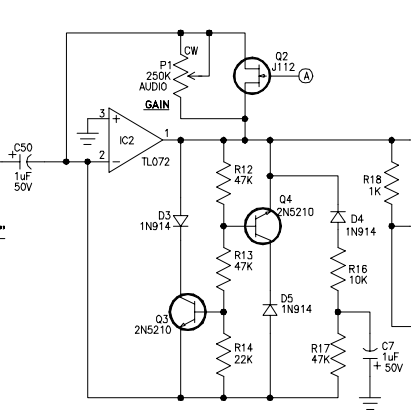Bo Deadly
Well-known member
I don't want to hijack the tube compressor thread with a conversation about something as elusive as semiconductor based tube-like circuits so I'll post this as a separate thread here.
I could go into this all day but if there's one thing I've learned about trying to make a circuit that has subtle distortion like a tube, it's that when I think I've definitely figured it out, I most certainly have not.
Part of the problem with trying to figure out how to make a silicon circuit that mimics the subtle distortion of a tube is that one tube stage by itself is not useful for listening tests. There are parts of a complete amplifier that have a large impact on the sound like the output transformer and speaker. You have to build an entire silicon based Fender Twin Reverb, hook it up to a power amp and play it through a speaker (a Jensen P12Q speaker is a brick wall filter at 5kHz) in a room with nice acoustics a few times over some days to really understand how it sounds. That is totally impractical. The alternative is to divide the problem down into parts and study individual sections of the amp in-situ. But again, because the issues have to do with dynamics and at different frequencies, the test procedure would have to involve much more than simple test tones.
Circuits like transtube (and the one from Crate which is similar I think) are largely just wave shapers which is definitely not at all sufficient. Anyone can overload a clipper, mid-scoop and get Black Sabbath. For subtle distortion, there are other things going on that have to do with dynamics at different frequencies and "blocking distortion" and other things. There are different tube topologies that exhibit very different behavior. Again, refer to Designing Valve Preamps by Blencowe.JohnRoberts said:There has been a lot of work invested in solid state mimics of tube overload, involving multiple patents.
The approach developed by Peavey marketed as "transtube" was imo pretty successful (but the transtube technology was used in guitar amps, not efx units).
I could go into this all day but if there's one thing I've learned about trying to make a circuit that has subtle distortion like a tube, it's that when I think I've definitely figured it out, I most certainly have not.
Part of the problem with trying to figure out how to make a silicon circuit that mimics the subtle distortion of a tube is that one tube stage by itself is not useful for listening tests. There are parts of a complete amplifier that have a large impact on the sound like the output transformer and speaker. You have to build an entire silicon based Fender Twin Reverb, hook it up to a power amp and play it through a speaker (a Jensen P12Q speaker is a brick wall filter at 5kHz) in a room with nice acoustics a few times over some days to really understand how it sounds. That is totally impractical. The alternative is to divide the problem down into parts and study individual sections of the amp in-situ. But again, because the issues have to do with dynamics and at different frequencies, the test procedure would have to involve much more than simple test tones.




